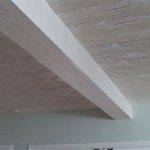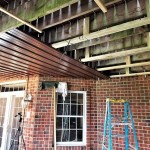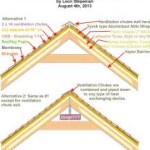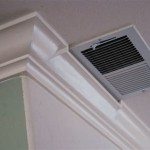How To Wire A Ceiling Fan Without Light Kit: A Comprehensive Guide
Installing a ceiling fan can significantly improve a room's comfort by increasing air circulation. While many ceiling fans come equipped with light kits, some models are designed for fan-only operation. Wiring a ceiling fan without a light kit is a simpler process than wiring one with a light, but it still requires careful attention to detail and adherence to safety protocols. This article provides a comprehensive guide on how to safely and effectively wire a ceiling fan without a light kit.
Before commencing any electrical work, it is crucial to prioritize safety. Electricity can be dangerous if mishandled. Ensure the power to the circuit is completely off before starting the installation. This can be done by switching off the relevant circuit breaker in the electrical panel. It is also recommended to use a non-contact voltage tester to confirm that the wires are not live. If you are uncomfortable working with electricity, it is advisable to consult a qualified electrician.
This guide is intended for individuals with a basic understanding of electrical wiring. Familiarity with wire colors, wire stripping, and connecting wires with wire connectors is essential. Always refer to the manufacturer's instructions that come with the ceiling fan, as specific wiring configurations may vary slightly between models.
Key Point 1: Preparing for Installation: Gathering Tools and Turning Off Power
Before initiating the wiring process, gather all the necessary tools and materials. This preparation will streamline the installation and minimize potential delays. The following items are typically required:
- Screwdrivers (Phillips and Flathead)
- Wire strippers
- Wire connectors (wire nuts or push-in connectors)
- Electrical tape
- Non-contact voltage tester
- Pliers
- Ladder or step stool
- Ceiling fan mounting bracket (typically included with the fan)
Once the tools are assembled, locate the circuit breaker that controls the power to the ceiling fan's wiring. Turn the breaker to the "off" position. Double-check that the power is off by using a non-contact voltage tester on the wires extending from the ceiling electrical box. If the tester indicates the presence of voltage, re-check the circuit breaker to ensure the correct one is switched off.
Carefully remove the existing light fixture or old ceiling fan, if one is present. Disconnect the wires, noting their colors and connections. This information will be helpful when connecting the new ceiling fan. If the existing electrical box is not rated for ceiling fan use, it will need to be replaced with a fan-rated box. These boxes are designed to withstand the weight and vibrations of a ceiling fan.
Inspect the wires extending from the ceiling electrical box. Ensure they are in good condition, with no exposed copper or frayed insulation. If the wires are damaged, they should be repaired or replaced. Consult an electrician for assistance if necessary.
Key Point 2: Mounting the Ceiling Fan Bracket and Connecting the Wires
The next step involves securely mounting the ceiling fan's mounting bracket to the ceiling electrical box. The specific mounting procedure will vary depending on the type of bracket and the construction of the ceiling. However, the general principles remain the same.
If replacing an existing fixture, the existing mounting screws may be compatible with the new bracket. If not, use the screws that are included with the ceiling fan. Align the mounting bracket with the screw holes in the electrical box. Ensure the bracket is flush against the ceiling surface.
Tighten the screws securely. The mounting bracket must be firmly attached to the electrical box to support the weight of the ceiling fan. If the electrical box is not securely attached to the ceiling joist, it will need to be re-secured or replaced. Failure to properly mount the bracket can result in the fan falling from the ceiling.
Once the mounting bracket is securely installed, proceed to connect the wiring. The wiring connections typically involve three wires: black (hot), white (neutral), and green or bare copper (ground). The ceiling fan will have corresponding wires that need to be connected to these wires. The manufacturer's instructions will specify the exact wire colors on the ceiling fan.
Using wire strippers, carefully strip approximately ¾ inch of insulation from the ends of the wires. Twist the bare ends of the corresponding wires together tightly, or use push-in connectors following the manufacturer's instructions. Secure the connection with a wire connector (wire nut). Ensure the wire connector is properly sized for the number and gauge of wires being connected.
The following wiring connections are typically made:
- Black wire (from ceiling) to black wire (from fan): This is the hot wire that provides power to the fan motor.
- White wire (from ceiling) to white wire (from fan): This is the neutral wire that completes the electrical circuit.
- Green or bare copper wire (from ceiling) to green or bare copper wire (from fan): This is the ground wire that provides a path for electrical current in the event of a fault.
After making each connection, gently tug on the wires to ensure they are securely connected. Wrap electrical tape around the wire connectors to further secure the connections and provide insulation. This will help prevent accidental disconnections and electrical shorts.
Carefully tuck the wires back into the electrical box, ensuring they are not pinched or damaged. Leave enough slack in the wires to allow for easy connection and disconnection if needed in the future.
Key Point 3: Assembling and Installing the Fan Motor and Blades
With the wiring completed, proceed to assemble the remaining components of the ceiling fan. This typically involves attaching the fan motor to the mounting bracket and installing the fan blades.
Follow the manufacturer's instructions for attaching the fan motor to the mounting bracket. This typically involves hanging the motor from the bracket using a ball-and-socket joint. Ensure the motor is securely seated in the bracket and that it can rotate freely. Some models require securing the motor with screws or other fasteners.
Next, install the fan blades. The specific method for attaching the blades will vary depending on the design of the fan. However, the general principle is the same: securely attach the blades to the blade holders, and then attach the blade holders to the fan motor. Ensure all screws are tightened securely to prevent the blades from becoming loose or vibrating during operation.
When installing the blades, pay attention to the direction of rotation. Most ceiling fans are designed to rotate in both clockwise and counterclockwise directions. The direction of rotation can be reversed using a switch on the fan motor. In the summer, the fan should rotate counterclockwise to create a downdraft that cools the room. In the winter, the fan should rotate clockwise at a low speed to circulate warm air that has risen to the ceiling.
Once the fan motor and blades are installed, double-check all connections and fasteners to ensure they are secure. This is a critical step to prevent the fan from falling or malfunctioning.
Carefully raise the ceiling fan housing and attach it to the mounting bracket, concealing the wiring and mounting hardware. The housing is typically secured with screws or other fasteners. Ensure the housing is flush against the ceiling surface.
Finally, restore power to the circuit by switching the circuit breaker back to the "on" position. Test the ceiling fan to ensure it is operating properly. Check that the fan rotates smoothly and quietly in both directions. If the fan wobbles or makes unusual noises, stop the fan immediately and troubleshoot the problem. Ensure all blades are securely attached and properly balanced. Adjust the blade holders as necessary to eliminate the wobble.
If the ceiling fan does not operate at all, re-check the wiring connections and ensure the circuit breaker is functioning correctly. If the problem persists, consult an electrician.
Following these steps will enable the safe and effective wiring of a ceiling fan without a light kit. Remember to prioritize safety and consult an electrician if you are uncomfortable with any aspect of the installation process.

Wiring A Ceiling Fan And Light With Diagrams Ptr

Wiring A Ceiling Fan And Light With Diagrams Ptr

How To Wire A Ceiling Fan Temecula Handyman

Wiring A Ceiling Fan And Light With Diagrams Ptr

Wiring A Ceiling Fan And Light With Diagrams Ptr

How To Wire A Ceiling Fan Temecula Handyman

Wiring A Ceiling Fan And Light With Diagrams Ptr

How To Wire A Ceiling Fan Control Using Dimmer Switch

Wire A Ceiling Fan

Wire A Ceiling Fan
Related Posts








